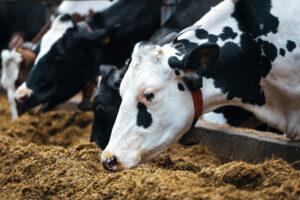Pests in Africa
In Africa, two major agricultural pests have recently been reported.
The identification of emerging risks is an ongoing process. The external communication of emerging risks is a complex task, with the methods, timing and target audience being determined on a case-by-case basis. Depending on the nature of the issue, the target group may be the authority (in particular the National Food Chain Safety Office – NÉBIH), senior managers, the professional community, food businesses or the wider community, consumers interested in the issue, etc. Not only emerging risks requiring action may be communicated, but some issues may also help to promote research or be important due to their educational character, and therefore may be communicated through communication channels such as the DFI's website.
In Africa, two major agricultural pests have recently been reported.

A recent study aimed to assess factors that influence the prevalence of Campylobacter spp. in chicken manure samples from open environment farms in the United States.

Official reports and scientific studies are raising concerns about the pollution of drinking water and the associated health risks. Issues include potentially carcinogenic pesticide residues and the presence of lithium, which could increase the risk of infantile autism.

The new European Union (EU) regulation regarding per- and polyfluoroalkyl substances (PFAS) in specific food products has highlighted the necessity for a more sensitive method of PFAS analysis. In response to this need, the Technical University of Denmark (DTU) has successfully validated such a method, which has subsequently been utilized to analyze eggs obtained from Danish farms.
Silklab at Tufts University has been using silk as a solution for various technological challenges. Scientists have transformed silk into useful materials, such as faux leather, optical sensors and coatings that can extend the shelf life of food.
Previous research with taurine, a semi-essential micronutrient, indicated a correlation between blood taurine levels and health, however its impact on aging remained unknown.
Since 2016, dicamba has been a popular herbicide on soybeans and other genetically modified species that are resistant to the drug. Dicamba offers a solution to the problem caused by glyphosate-resistant weeds, but it also carries a number of risks.
High dietary intakes of sulfites could be a safety concern for consumers of foodstuffs that contain the additives, EFSA’s experts concluded in their updated assessment of sulfur dioxide (E220) and sulfites (E221-228). Gaps in toxicity data meant the extent of certain adverse health effects could not be confirmed.

Several studies show that honey counterfeiting is a very common problem.

Egy nemrég megjelent áttekintő tanulmány a rovarok szerepét tárgyalja az európai agrárökoszisztémákban, kiemelve a rovarok hozzájárulását a fenntartható mezőgazdasághoz, a “farmtól az asztalig” (F2F) stratégiához és az európai Green Deal megállapodás teljesítéséhez.
A French analysis looked at the nanoparticle content of commercially available everyday products. Another study investigates the effects of nanoparticles in the development of food allergies.
To study the impact of maternal exposure to aflatoxin B1 on the developing neurons and central nervous system of the foetus, researchers developed an in vitro model consisting of various human cell lines.

Researchers and scientists are actively exploring various strategies to reduce methane emissions from dairy cattle, as methane is a potent greenhouse gas that contributes to climate change. Here are some of the methods and approaches they are investigating.
Over the past few years, as research has progressed further, there has been a growing interest in the study of metal zinc oxide (ZnO) nanomaterials within the field of biology, specifically in biomedicine and food safety.
The European Food Safety Authority (EFSA) regularly reviews the safety of chemicals like BPA that can migrate into food and drinks from their containers.

In the process of identifying emerging risks, we are constantly confronted with news stories that deal with food contact materials and their potential risks. Below is a summary of these news items.

Recently, there have been a number of news items related to sustainable packaging. Here we shortly present some of them.

EFSA reduced the upper intake limit value (UL) of vitamin B6 from 25 mg to 12 mg per day and the UL for selenium from 300 µg to 255 µg per day. The finalization of the draft evaluation for vitamin B6, in relation to which a public consultation has already been concluded, is expected in the coming months.

According to an article published in February 2023, the cause of the fatal "staggering disease" has probably been found. ‘Staggering disease’ is a neurological disease entity considered a threat to European domestic cats (Felis catus) for almost five decades. However, its aetiology has remained obscure.

New scientific evidences support that ultra-processed foods (UPFs) may increse cancer risk. Researcher found that a 10% increase in consumption of ultra-processed food was linked to a 2% increase in being diagnosed with cancer and a 6% increase in dying from cancer.